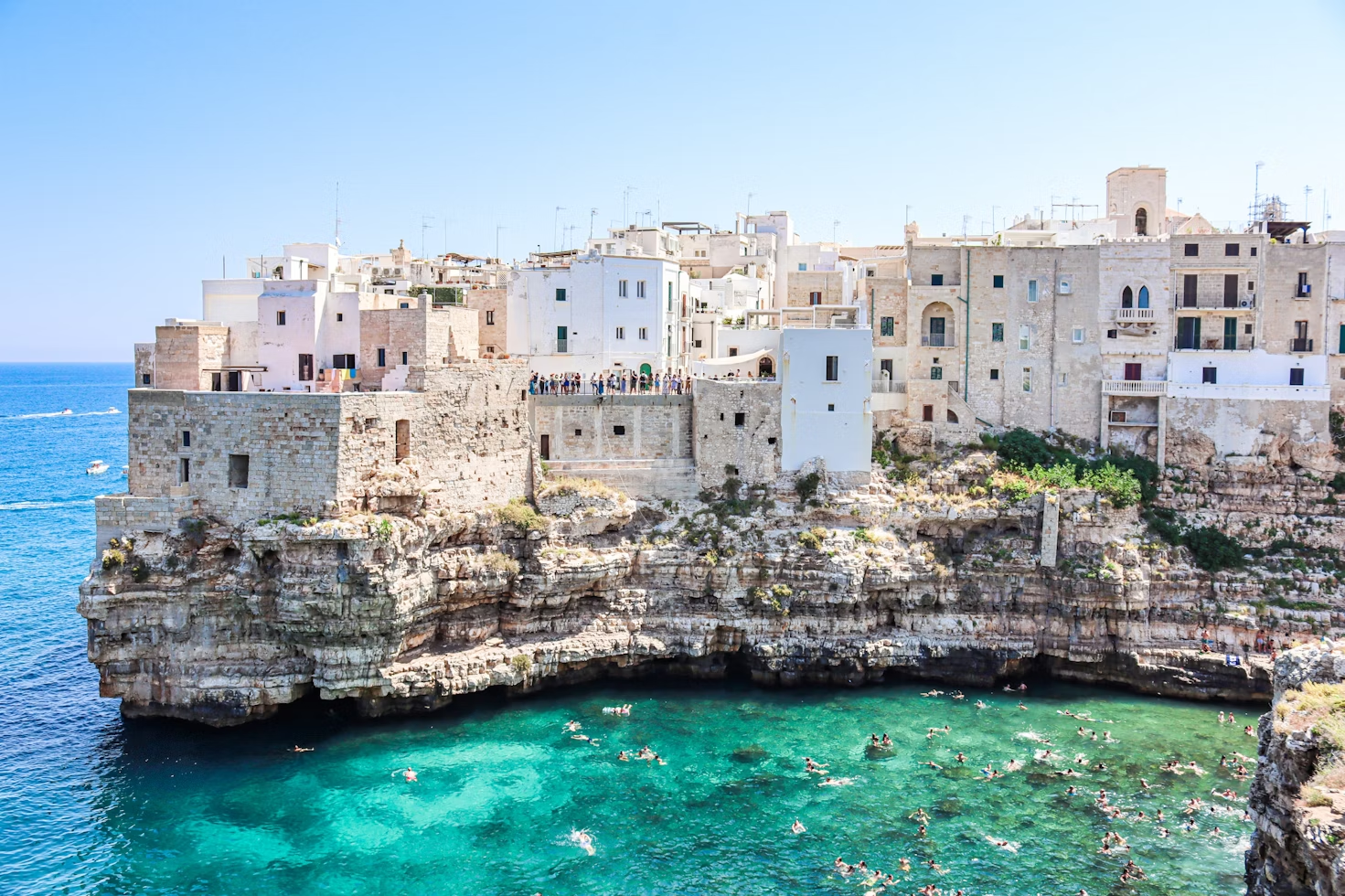Italy, celebrated for its iconic cities, stunning landscapes, and rich history, has a wealth of hidden gems waiting to be discovered beyond the usual tourist spots. While destinations like Rome, Venice, and Florence captivate millions with their grandeur, the lesser-known villages embody Italy’s authentic charm.
Tucked away from the bustling crowds, these villages offer a glimpse into a slower pace of life, where ancient traditions flourish and the countryside reveals its untouched beauty. For travelers yearning to escape the usual itineraries and experience the true essence of Italy, these ten hidden villages promise an unforgettable journey into the country’s soul.
1. Pitigliano, Tuscany: The Little Jerusalem
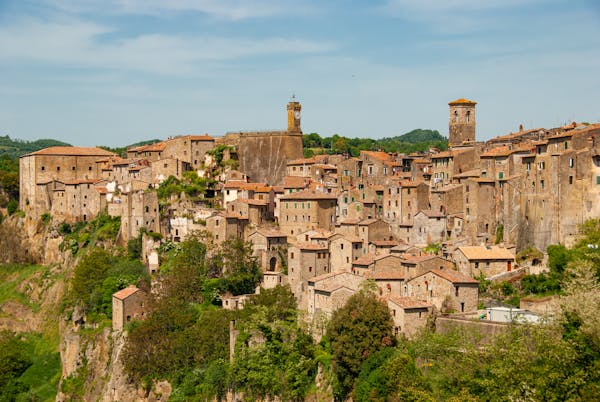
Perched on a striking tufa rock ridge in Tuscany’s Maremma region, Pitigliano is a travel destination that seems to have risen straight from the earth. Its Etruscan roots are reflected in its maze-like streets and ancient stone-carved cellars. Over the centuries, Pitigliano became a sanctuary for a thriving Jewish community, earning it the nickname “Little Jerusalem.” Today, travelers can explore its synagogue, Jewish museum, and charming alleys filled with the scent of traditional baked goods, offering a glimpse into its rich cultural history.
Exploring Pitigliano’s historic center feels like stepping into the past. Weathered stone houses sit tightly together, creating an intimate and timeless atmosphere. From the cliffside viewpoints, visitors can admire sweeping views of the Tuscan countryside, a picturesque mosaic of vineyards and olive groves. The local cuisine, blending Tuscan and Jewish traditions, delights with hearty wild boar stews and sweet almond-based pastries.
2. Bosa, Sardinia: A Rainbow by the River
Perched along the Temo River on Sardinia’s western coast, Bosa is a charming village known for its vibrant pastel-colored houses cascading down the hillside. At the top sits the historic Castello Malaspina, a medieval fortress watching over the town. The colorful reflections dancing on the river create a stunning, picture-perfect view that has inspired artists.
Strolling through Bosa’s narrow streets, you’ll discover artisan workshops, traditional lace makers, and warm encounters with locals. A visit to Malaspina Castle offers panoramic views of the town and coastline and a glimpse into its rich history. Nearby, pristine beaches with crystal-clear waters provide a serene escape, perfectly complementing Bosa’s old-world charm. With its blend of striking colors, historical depth, and coastal allure, Bosa is a true Sardinian treasure.
3. Alberobello, Puglia: Land of the Trulli
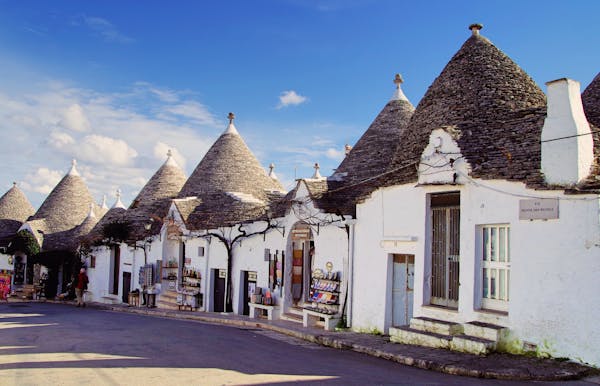
Alberobello, nestled in the heart of Puglia, is famous for its unique trulli – white stone houses with iconic conical roofs. These centuries-old structures create a whimsical, fairytale-like charm that comes to life in the Rione Monti district, a UNESCO World Heritage site. Strolling through its narrow streets, lined with rows of these charming dwellings, feels like stepping into another world.
The trulli’s origins are tied to an ingenious and rebellious building method designed to evade taxes. Their dry-stone construction allowed them to be quickly dismantled when tax collectors arrived. Today, these historic structures have been beautifully preserved and repurposed as homes, shops, and even guesthouses. Discovering their intricate design and the symbolic markings on their roofs provides a fascinating glimpse into the region’s history and resourcefulness.
4. Civita di Bagnoregio, Lazio: The Dying City
Civita di Bagnoregio, perched on a fragile tufa hill, is a breathtaking and unique destination. Accessible only by a pedestrian bridge spanning a dramatic valley, this secluded village is often called “the dying city” due to the relentless erosion threatening its foundations. Despite this vulnerability, Civita exudes charm with its ancient stone buildings, vibrant flower-filled balconies, and sweeping panoramic views.
Exploring Civita’s quiet, car-free streets feels like stepping back in time. The peaceful atmosphere and absence of modern distractions enhance its timeless allure. At the heart of the village, the main piazza—once a lively gathering place—now offers a serene spot to admire the surroundings. Though erosion casts uncertainty over its future, Civita’s striking beauty and rich history make it a hauntingly unforgettable destination.
5. Orta San Giulio, Piedmont: Island Serenity on Lake Orta
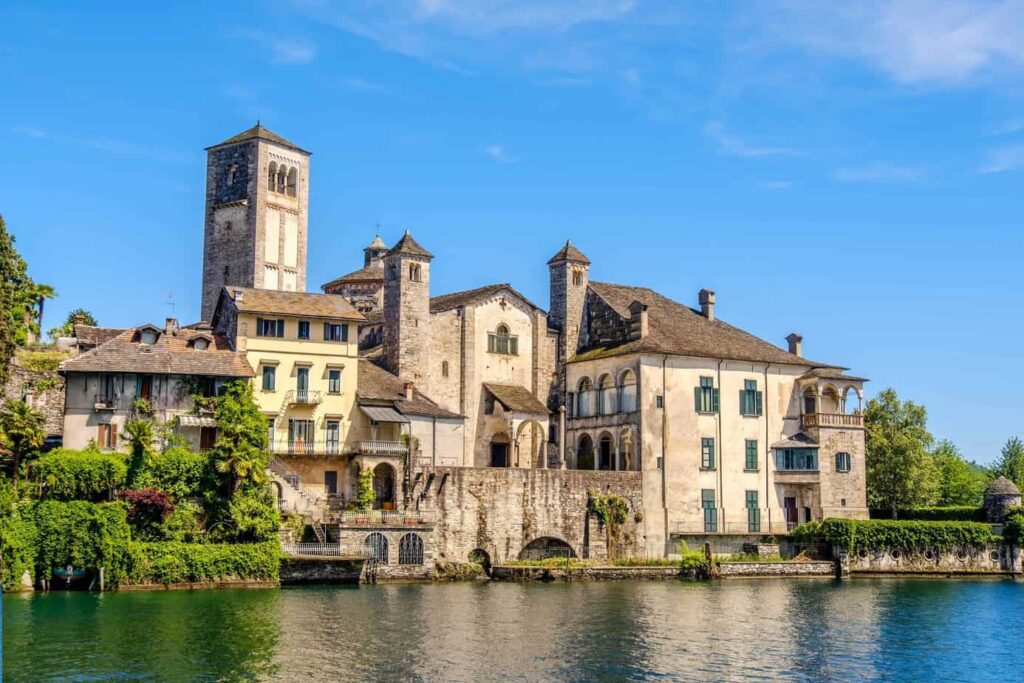
Perched on a small peninsula extending into the peaceful Lake Orta in Piedmont, Orta San Giulio is a charming village radiating serenity and timeless appeal. Its traffic-free historic center, with winding cobblestone streets, elegant palazzi, and inviting courtyards, is perfect for a stroll. Piazza Motta, a picturesque square offering views of the nearby Isola di San Giulio, is at the heart of the village, just a short boat ride away.
A trip to Isola di San Giulio reveals its ancient basilica and the tranquil “Way of Silence,” providing a more profound sense of calm. Back in Orta San Giulio, vibrant frescoes on the palazzi and the sweet scent of blooming wisteria enhance the village’s magical atmosphere. The gentle sound of the lake lapping at the shore and breathtaking views of the surrounding mountains complete this idyllic retreat.
6. Furore, Campania: The Painted Village on the Amalfi Coast
Hidden within a deep gorge along the breathtaking Amalfi Coast, Furore is a unique village that seems to cling to the steep cliffsides. Due to its dispersed nature, Furore is often referred to as “the village that doesn’t exist.” However, it is famous for its vibrant murals adorning the walls of its houses. These colorful artworks, created by artists worldwide, transform the village into an open-air gallery.
Discovering Furore involves navigating winding roads and staircases that connect the different hamlets scattered along the gorge. The dramatic landscape, with its towering cliffs and the Fiordo di Furore, a stunning inlet with a small beach, adds to the village’s unique appeal. The annual high-diving competition at the fiordo attracts international attention, showcasing the village’s adventurous spirit. Furore offers a different perspective on the Amalfi Coast, one that blends artistic expression with raw natural beauty.
7. San Gimignano, Tuscany: The Medieval Manhattan
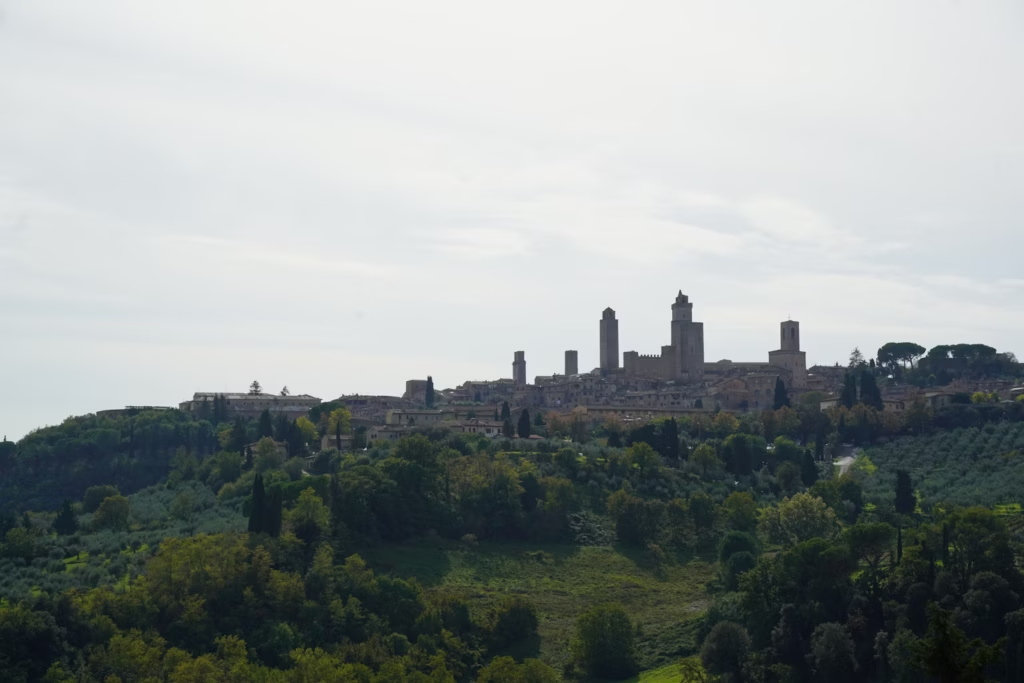
San Gimignano, though more renowned than some villages on this list, still holds a hidden charm, especially outside peak tourist season. Its iconic skyline, defined by a cluster of medieval towers, has earned it the nickname “Medieval Manhattan.” These towers, built by wealthy families during the Middle Ages as symbols of power, offer a fascinating glimpse into the area’s history.
Exploring the historic center, a designated UNESCO World Heritage site, feels like traveling back in time. Highlights include the Piazza della Cisterna, with its ancient well, and the Piazza del Duomo, home to the Collegiata, a beautiful Romanesque church. For stunning views of the Tuscan countryside, climbing up the Torre Grossa, the tallest tower, is a must. With its medieval architecture and breathtaking scenery, San Gimignano is a truly enchanting destination in Tuscany.
8. Sappada, Friuli-Venezia Giulia: A Dolomite Gem
Nestled high in the Dolomite Mountains of Friuli-Venezia Giulia, Sappada is a charming alpine village that feels worlds away from the bustling Italian cities. Surrounded by towering peaks, lush forests, and crystal-clear streams, Sappada offers a haven for nature lovers and outdoor enthusiasts. Its traditional wooden houses, adorned with flower boxes, and close-knit community exude a sense of warmth and authenticity.
Sappada’s unique cultural heritage is evident in its distinct dialect, traditional crafts, and lively festivals. In the winter, it transforms into a popular ski resort; in the summer, it offers a wealth of hiking and biking trails. The local cuisine, influenced by Italian and Austrian traditions, features hearty mountain dishes and delicious cheeses. Sappada’s stunning natural beauty and strong cultural identity make it a hidden gem in the Italian Alps.
9. Rasiglia, Umbria: The Village of Water
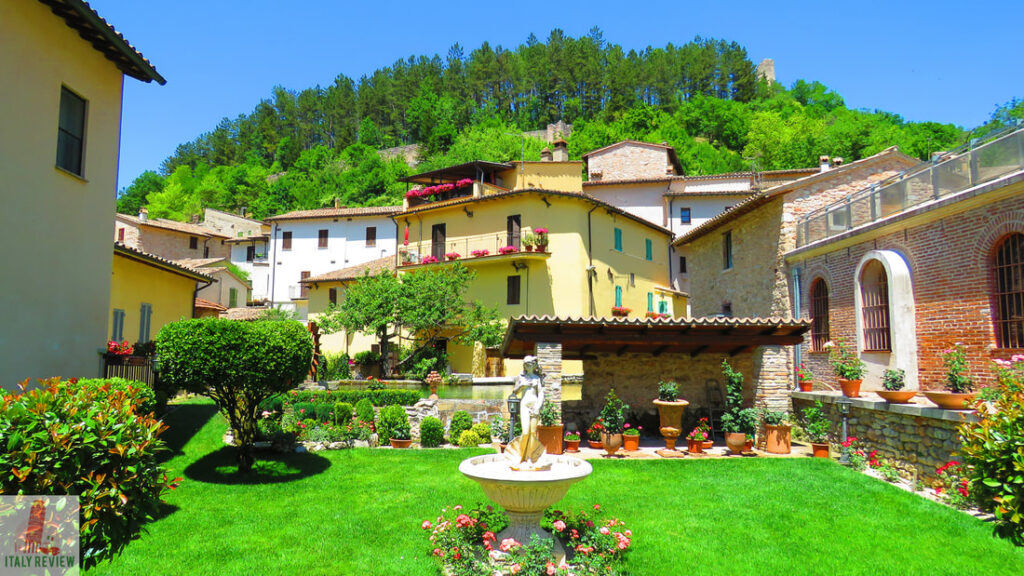
Nestled in the heart of Umbria, Rasiglia is a one-of-a-kind village where water flows through every corner of life. Canals and streams wind between stone houses, powering ancient mills and filling the air with the soothing sound of running water. This intimate bond with water defines Rasiglia’s charm and history.
Wandering through the village means crossing quaint bridges and following waterways as they cascade through the streets. Visitors can uncover a deeper connection to Italy’s cultural heritage by exploring this hidden gem far from the usual tourist paths. The well-preserved mills showcase the ingenuity of Rasiglia’s past, while the surrounding rolling hills and olive groves complete its picturesque setting. Rasiglia offers a serene and captivating glimpse into the harmony between nature and human life.
10. Pitelli, Liguria: A Coastal Escape with a View
Nestled on a hilltop overlooking the Gulf of La Spezia in Liguria, Pitelli is a peaceful village offering incredible coastal views without the hustle and bustle of the Cinque Terre. Its charming, winding streets are lined with colorful houses and fragrant gardens, leading to stunning viewpoints where the Ligurian Sea unfolds. With its quiet, authentic vibe, Pitelli is the ideal getaway from crowded tourist spots.
Strolling through Pitelli’s historic center uncovers hidden squares, centuries-old churches, and the warm hospitality of its locals. The air is filled with the fresh scent of the sea and blooming flowers, creating a truly sensory experience. With nearby beaches and easy access to the Cinque Terre and Portovenere, Pitelli is a perfect base for exploring the Ligurian coast while enjoying the calm of this lesser-known village. Its breathtaking views and laid-back atmosphere make Pitelli a true hidden treasure.
Final Thoughts
These ten hidden villages offer a glimpse into Italy’s authentic heart, a side often overshadowed by its more famous destinations. Each village, with its unique history, landscape, and traditions, tells a story of resilience, beauty, and the enduring spirit of Italian life.
Travelers can discover a deeper connection with Italy’s rich cultural tapestry and create memories that will last a lifetime by venturing off the beaten path and exploring these lesser-known corners of the country. From the dramatic cliffs of Pitigliano to the watery charm of Rasiglia, these hidden gems are waiting to be unveiled, promising an unforgettable journey into the soul of Italy.

